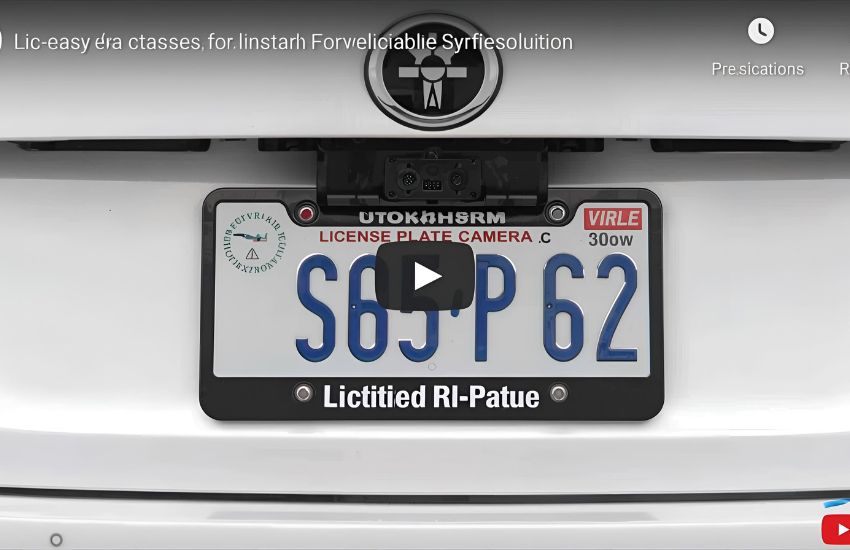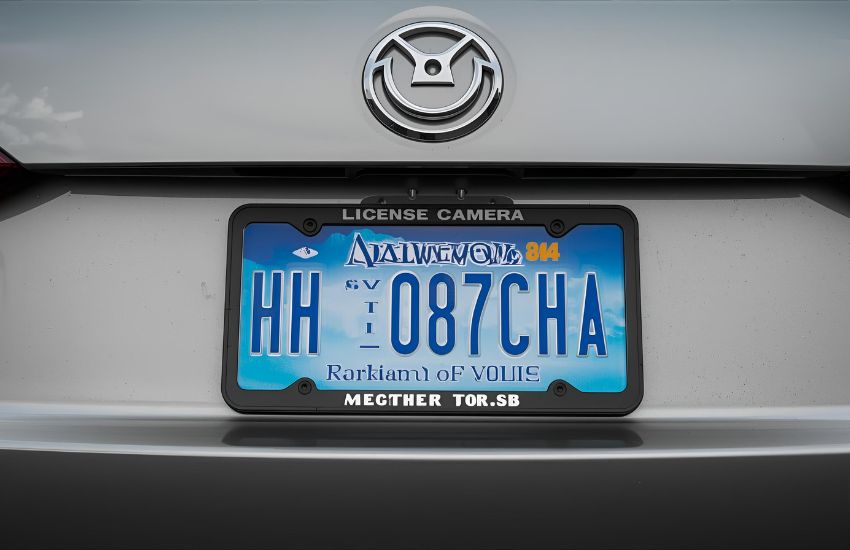Capturing fast-moving license plates with clarity—day or night—requires more than just an ordinary camera. As surveillance demands evolve, installing an LPR camera (License Plate Recognition camera) has become essential for modern, reliable vehicle monitoring. Whether you’re securing a gated facility or tracking entry and exit points, your ability to install and configure the right camera setup can determine the success of your entire system.
To install a license plate camera for reliable and modern surveillance, mount it at a suitable height facing incoming vehicles. Ensure proper angle and focus to clearly read license plate numbers. Use Power over Ethernet (PoE) for stable power and data transmission. Adjust settings for optimal night and day performance, and connect to your IP network for seamless monitoring.
In this guide, you’ll learn how to install a license plate camera correctly, including positioning tips, lighting considerations, camera settings, and LPR best practices to ensure consistent recognition of license plates. Let’s explore how to build a smarter, more accurate surveillance solution from the ground up.
Choose the Right LPR Camera and Angle for Optimal Surveillance

Selecting the correct LPR camera and installing it at the proper angle is essential to ensure accurate, efficiently functioning surveillance in any environment—whether residential, toll, or commercial. Your decision must be guided by the level of clarity and reliability you require, the positioning constraints of the site, and the technical capabilities of the device.
When choosing a camera used to capture license plates, focus on models that offer high resolution with at least 300–400 pixels wide per plate for crisp identification. This detail level is key to ensuring readable plates, even in motion or during low-light conditions. Select devices with built-in filtering to reduce glare from headlight beams, which can obscure important plate details at night.
The angle of installation is equally important. Avoid placing the camera too high on a ceiling or pole unless it’s designed to extend downward or tilt correctly. The goal is to keep the plate view within the optimal parameter—usually straight-on or with minimal deviation. This reduces distortion and helps mitigate common errors in automated recognition.
Lighting conditions must also be taken into account. Ensure the camera is directed toward a well-lit path, or opt for models with superior low-light sensitivity to maintain plate visibility during dusk, rain, or a storm. Use Cat6 cables for long-range, high-bandwidth connections to preserve transmission efficiency and quality over time.
Lastly, always consult your system support team or vendor to confirm compatibility, installation guidelines, and environmental suitability. When chosen and installed correctly, your LPR camera will utilize its features independently, delivering dependable, round-the-clock license plate recognition that meets both operational and security demands.
See more about…License Plate Capture
Install License Plate Camera with Proper Lighting and Network Setup

Installing a license plate camera correctly ensures precise surveillance and dependable license plate capture, even in challenging environments. To achieve optimal results, you must pay close attention to lighting conditions, camera positioning, and network configuration.
Optimal Positioning and Mounting the Camera
Start by selecting a position that provides a direct line of sight to the target area where vehicles pass. When you install license plate cameras, avoid extreme mounting angles, which can distort the view and reduce the camera’s ability to capture license plates accurately. For the best results, the camera captures plates head-on at a height and position that aligns with the vehicle’s front or rear.
Ensure proper mounting the camera using secure brackets designed for various applications. Stability is essential to avoid vibration that may affect image quality.
Lighting Setup and Night Vision Optimization
Proper lighting is critical for successful license plate capture. If your camera lacks a built-in IR illuminator, consider installing an external one to enhance night vision performance. Control exposure and shutter speed to reduce glare from reflective plates and headlights. This helps you get a clear image both during the day and at night.
Choose a camera with strong black and white night mode capabilities to maintain detail in low-light conditions. A well-balanced lighting setup ensures your camera captures consistent and readable footage regardless of the environment.
Network and NVR Setup for Reliable Surveillance
Once you’ve set up the power supply and install license plate camera in place, connect it using quality cable—preferably shielded—to minimize interference. Secure your setup to a reliable NVR (Network Video Recorder) or CCTV video recorder that supports high-resolution recording and remote access.
Configure your NVR to store license plate footage with proper time-stamps for legal and law enforcement use. Always check compatibility between your camera and manufacturer specifications to avoid issues during integration.
A robust network setup guarantees real-time surveillance, smooth data transfer, and dependable video archiving, providing peace of mind and compliance with monitoring standards.
See more about...License Plate Capture
Conclusion
In conclusion, installing an LPR camera with precision and planning significantly enhances your monitoring capabilities across various environments. From selecting the right IP camera to positioning it at the optimal angle, each step plays a vital role in achieving reliable license plate monitoring. With the right lens and fine adjustments, your system can consistently read license plate numbers with clarity—even in low light or high-speed scenarios.
Integrating PoE (Power over Ethernet) not only simplifies power delivery and connectivity but also supports more reliable and efficient system deployment. Ensure the camera’s housing is suitable for your environment to protect against weather or vandalism, further supporting long-term reliable operation. A well-matched interface and automatic detection settings can help generate real-time alerts and make monitoring smarter and faster.
When all components—from the lens to the IP network—work in harmony, your system becomes a reliable solution to read and record plate data effectively. Whether you’re aiming for improved access control or enhanced security coverage, a properly installed LPR camera will provide accurate, uninterrupted monitoring and dependable results.
See more about…View Security Cameras Installed at Multiple Locations
Frequently Asked Questions (How to Install License Plate Camera for Reliable and Modern Surveillance Solutions)
What are the camera settings for a license plate?
For capturing license plates, cameras should use high resolution (at least 1080p), fast shutter speed (1/1000s or higher) to reduce motion blur, and infrared (IR) illumination for night visibility. Narrow field of view and proper angle alignment ensure clarity. Disable wide dynamic range if reflective plates cause glare, and adjust exposure for consistent results.
How much does a license plate reader camera cost?
A license plate reader (LPR) camera typically costs between $500 and $2,500 per unit, depending on resolution, infrared capability, and smart analytics. Basic models for small businesses are more affordable, while advanced systems with high-speed recognition and cloud integration cost more. Additional expenses include installation, software licenses, and ongoing maintenance, raising overall project costs.
Where to mount an Lpr camera?
An LPR (License Plate Recognition) camera should be mounted at a low angle, typically 3 to 4 feet off the ground, facing incoming or outgoing traffic. It must be positioned to capture vehicles head-on or at a slight angle, avoiding glare from headlights. Proper lighting and a clear, unobstructed view ensure accurate plate recognition.
How do plate cameras work?
Plate cameras, also known as license plate recognition (LPR) cameras, work by capturing high-resolution images of vehicle plates using infrared or visible light. Advanced software then processes these images, isolating and enhancing plate details. Optical character recognition (OCR) technology converts plate numbers into digital data, enabling vehicle identification, monitoring, and integration with security or traffic management systems.
